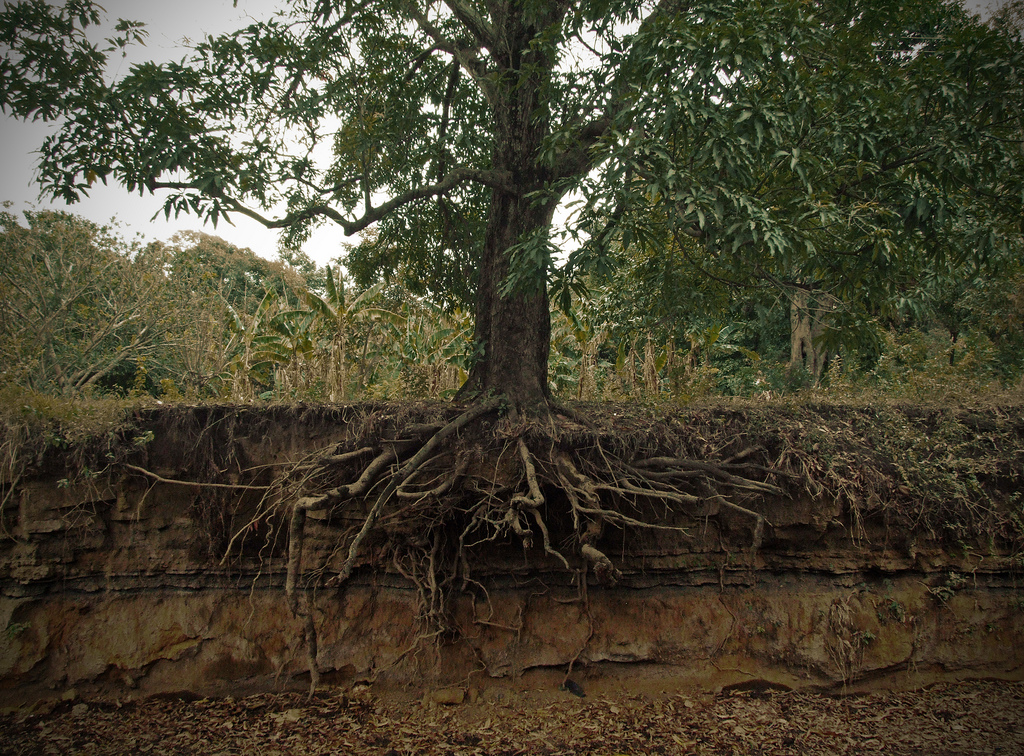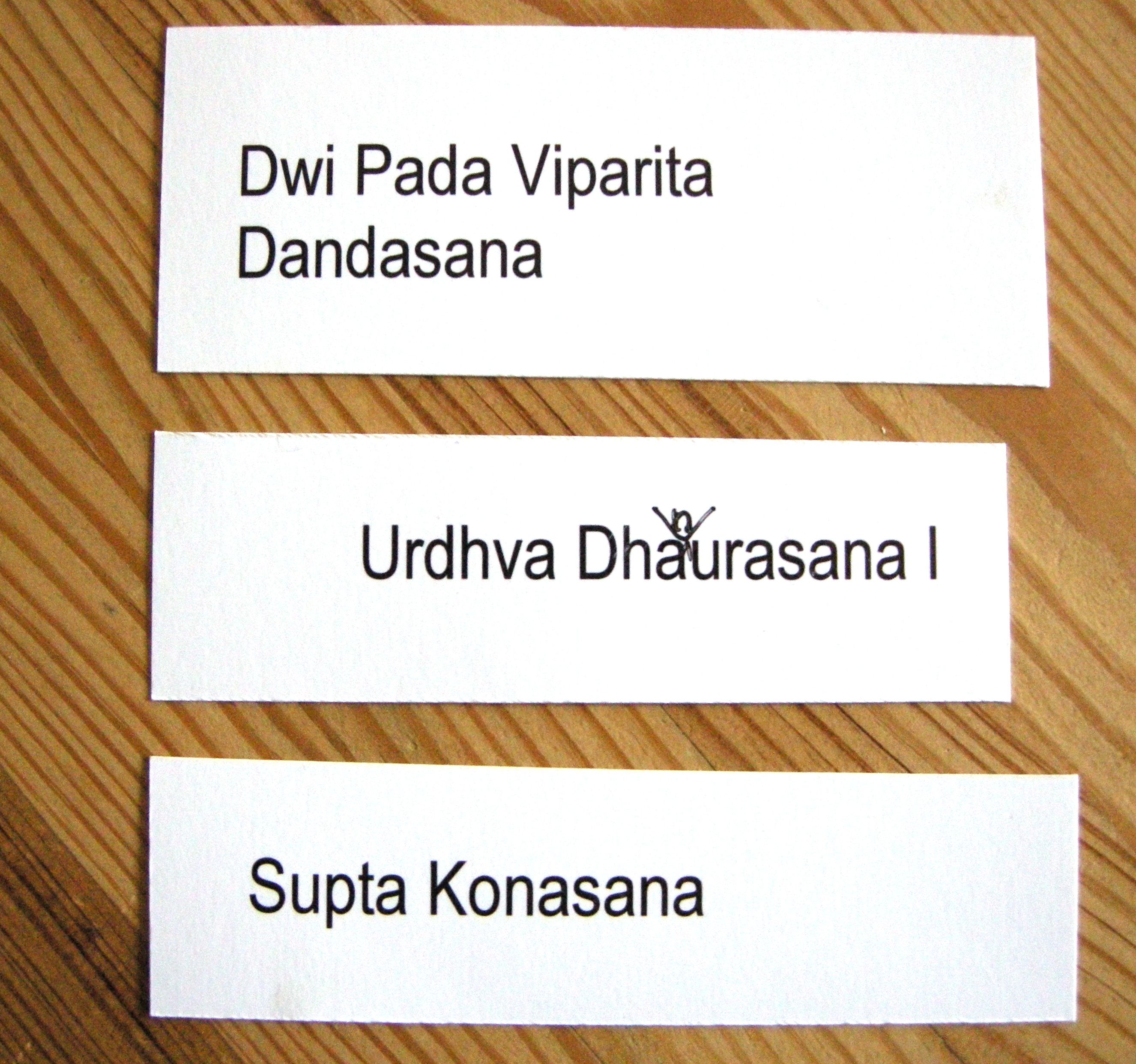Like a gardener I believe what goes down must come up. –Lynwood L. Giacomini
A gardener may believe that what goes down must come up, but a yogi believes that what goes down, and how decisively it goes down, determines what comes up, and how high.
Connections between gardening and yoga are, it seems, as plentiful as seeds on a sunflower.
In the garden of our practice, we cultivate our poses. Sometimes we have to pull out weedy bad habits. Always we have to till, prune and water. Neglect usually results in decay, but sometimes, as with a perennial tucked away in a far corner, poses bloom when we least expect them to.
And then there’s patience: in a garden, as in a yoga practice, nothing happens overnight.
But of all the links from your mat to your garden, nothing is more fundamental than understanding that what goes down must come up.
Learning to root down will revolutionize your yoga practice because it gives you the ability to lift up and create space in your body.
In essence, whatever body part is in contact with the floor presses down.
In standing poses the rooting is in your feet. In downward dog, your hands and feet, in headstand, your forearms and the crown of your head, in straight-leg seated poses, your sitting bones and legs.
Why does rooting work?
Think about a tennis ball. Drop it and it will bounce, a little. Hurl it to the ground and it will fly back up again, the size of the rebound a mirror image of the force that sent it to the ground.
The next time you take a pose, first find the root. Take your mind to the place that goes down. Press it down for a long moment, and see what lifts.
Do you have a favorite, not-so-obvious way to root in a particular pose? The upper leg foot in Ardha Matsyendrasana, perhaps? (Although if you clicked to see the picture, you’ll have to imagine the bottom foot turned sideways, and supporting the buttocks, not out to the side. Please share.
If you liked this post, you might also like:
10 Tips for Building a Home Yoga Practice
5 Reasons to Love Your Imbalances
5 Good Reasons to Let a Timer Be Your Practice Buddy
Bite-sized Random Acts of Yoga continue to amuse and delight me every morning.
This morning’s poses had some obvious links – the long side ribs in each, for example, and the inward rotation of the upper thighs in both Dwi Pada Viparita Dandasana (over a chair, feet to the floor for the Jr. I syllabus) and Urdhva Dhanurasana (also over a chair in this syllabus).
Lately I’ve been working to keep my feet from turning out when I push up into Urdhva Dhanurasana by holding a wood brick between my upper thighs. With the brick, it’s hellishly difficult to lift off the floor in the full pose. Clearly, I’ve been compensating. But in the chair, as long as I take time to position the brick so its top edge is just at the top of my thighs, I can feel the inner thigh work strongly.
How pleasant, then, to come t0 Supta Konasana, and feel the same sensation of the upper thighs, active, rolling towards each other and pulling back toward the hip socket.






Comments on this entry are closed.
Hi Eve,
I love this post and it has inspired me to write my blog post on rooting in Urdhva Dhanurasana which has always been a difficult pose for me.
Thanks for insight!
Love & light,
Karin
Hi Karin,
I’m glad to be of help, especially in Urdhva Dhanurasana. Thanks for the mention on your blog, and for taking the idea further.
I envy you your trip to Ankor Wat – I’ve always wanted to go there. Stay in touch.
Hey Kelly,
Good to hear from you, and thank you for detailing those actions. I’m going to try lengthened inner arches the next time I’m in Supta Konasana – great tip on keeping the foot vertical.
Apart from the moments when I think of some detail I’m fuzzy on, and start to worry, I’m enjoying this whole process. I would have said linking was a weak area for me before, and now I’m beginning to understand it. Practice, hey? Who knew.
It is great to have study buddies, even if it has to be virtual.
Then there is the action and opposite reaction. Whenever I balance in Utthita Hasta Padangustasana (extended hand to toe pose), I always pull my foot back towards me as much as I push into my hand with my foot. Equal force. Keeps me balanced… If you think of it that way, all lines of energy coming back to centre (ie. navel or thereabouts) then shooting back out to the universe with equal energy, working with breath each way, it makes sense at least to me – how about you?
Tks for your posts Eve! Great insights always…
H
Hey Helene,
Nice images!
Yes to an equal movement out and back, although in U.H.P. I would be pulling my thigh toward my hip socket with energy equal to the push away through the ball of my big toe, both energies opening the back of the knee.
And maybe that’s exactly the same thing physically, with slightly different words.
Thanks for the thoughtful comment.
Dear Eve;
I also think that lenghtening the inner leg to the inner arch and drawing the outer ankle back to the outer hip works for these. Those pesky adductors are so short!
Then the roots of the thighs need to grip the thigh bone in order for the hamstrings to release and lengthen.
Plus the work of the feet. True dwi pada and urdhva dhanurasana have the inner edge of the foot grounded to assist the lengthening of the inner leg. but supta konasana has some pretty fancy foot work too. The foot must be vertical which calls for that long inner thigh and awareness of all toe mounds pressng the surface of the mat or floor evenly. To get that we need to ask the inner arches to lengthen.
How fine to share this journey with you. Do tell us what you do to link these poses.